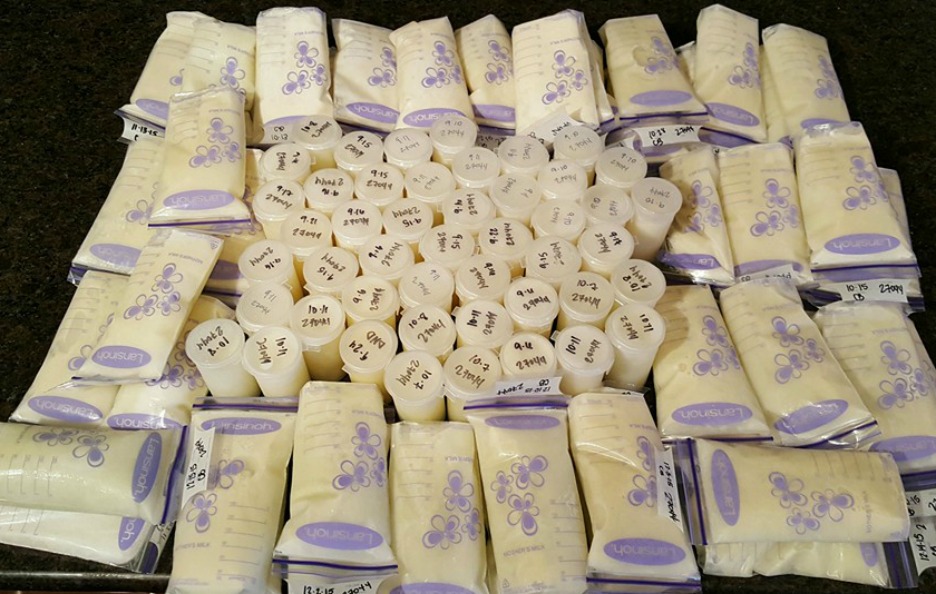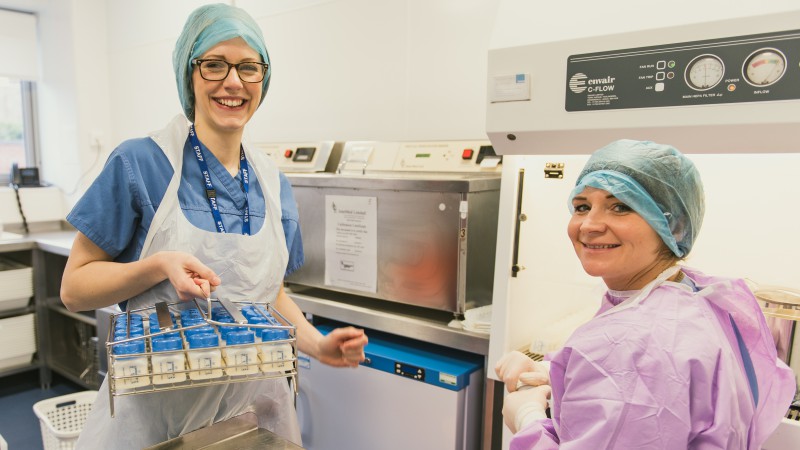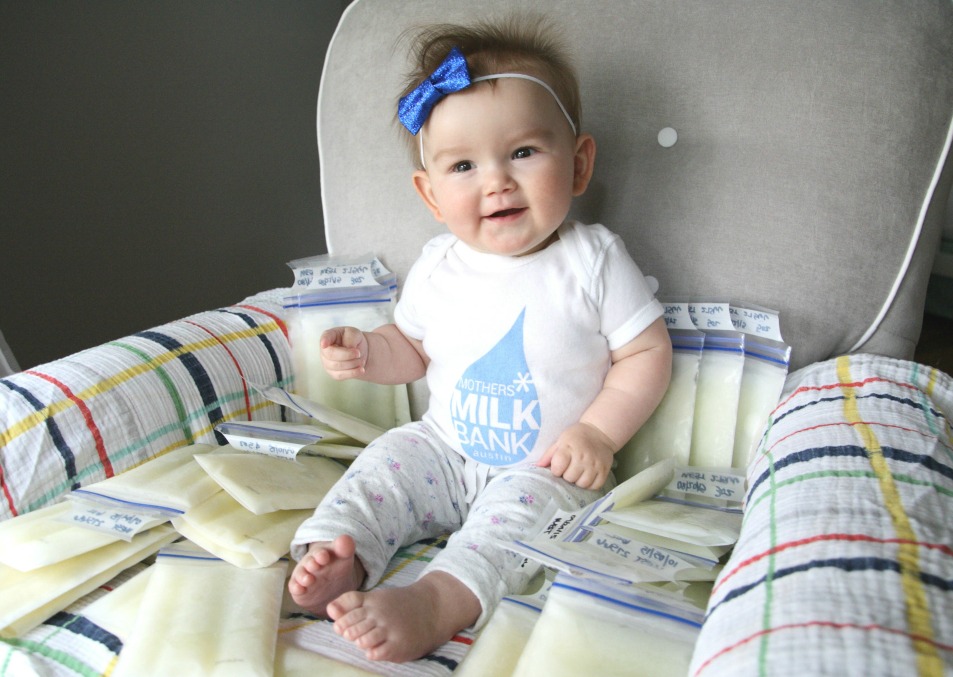Each woman has a different breastfeeding story to tell. Some have it easy where their breast milk supply can be abundant. On the other hand, some mothers struggle to build up their breast milk supply. Because of this, there is a rise in the demand for breast milk, even if it comes from another woman’s breast. The culture of breast milk donation and milk sharing is booming now more than ever.
If you have more than enough milk, it’s good to consider donating your excesses. Curious about how to begin the process of breast milk donation? In this nifty guide, we discuss everything you need to know about donating your breast milk.
Related: Everything You Need To Know About Storing Breast Milk
In A Nutshell…
- Milk sharing is the practice of donating and using another woman’s breast milk as an alternative to the mother’s own milk
- This can be donated formally through a milk bank or by informal milk sharing. Both are practices done nowadays, although donating to a milk bank is deemed safer as donors are strictly screened and the donor milk is handled and processed carefully in laboratories.
- In donating breast milk, proper measures to ensure safety in collecting, preparing, and storing the breast should be done.
- Once you donate the breast milk, this will be tested, pasteurized, stored and shipped to the recipient.
- Maintain your milk supply by applying techniques to increase and maximize your milk power.
Donating Breast Milk

The World Health Organization and the American Academy of Pediatrics refer to breast milk donation as the alternative and next best source of nourishment for a baby who is not able to nurse on his/her mother’s milk.
Even though the mother’s own milk is always preferred better than other alternatives as it has the ability to give biological benefits which may be lost in processing donated breast milk, a donor human milk may be the next best effective alternative when maternal milk is in short supply.
What’s Milk Sharing?
Milk sharing is the act of giving or using donated breast milk whenever the mother has problems producing an adequate breast milk supply. In earlier times, milk sharing was termed “wet nursing” wherein babies are nursed by another breastfeeding mother. This has become rare over the years as other forms of milk sharing have become more popular.
Nowadays, breast milk can be shared through a formal donation in a milk bank or through informal peer-to-peer milk sharing.
Are There Any Risks to Milk Sharing?
Since breast milk can be easily influenced by a person’s diet and lifestyle, there may be risks associated with milk sharing. It’s recommended to first consult with a health care provider in order to be sure of the safety and precautions needed to take before donating any milk. Some disadvantages of milk sharing include the following:
- Passing communicable diseases and infections to the baby
Human milk can be the carrier of bacterial or viral infections like HIV, HTLV I/II, and CMV. That’s why with formal milk banks, milk donors are carefully screened. The donated breast milk in milk banks also undergoes pasteurization to any kill bacteria and viruses.
- Intoxicating the baby with drugs or medicines
Breast milk can contain traces of drugs or medications from the donor, which can be transferred to the child. There are some medications that dangerous for babies to ingest, even in small amounts.
- Contamination
There are many points for contaminating breast milk from when it’s expressed and collected up until it’s processed and stored. These contaminants can put the baby’s health at risk for bacterial or viral infections.
Are There Any Laws Regulating Milk Sharing?
At the moment, there are no federal laws regulating the use and practice of breast milk donations and milk sharing in the USA. In 2010, media coverage brought attention to the milk sharing, for which the Food Drug and Administration (FDA) issued warnings on the potential risk of milk sharing.
Thus, the FDA recommends parents to use donor breast milk that has been carefully screened and to procure breast milk from milk banks that are guided by the protocols set by the Human Milk Banking Association of North America (HMBANA).
Formal Donation Through A Milk Bank

Formal milk sharing requires breast milk to be donated and processed in a milk bank. In cases where mothers are not able to produce milk for their baby, hospitals can get processed donor milk from a certified HMBANA milk bank.
HMBANA-accredited milk banks are non-profit, so donated milk isn’t paid for. Under the HMBANA Milk Donation Guidelines, donors should be strictly screened and tested for diseases like HIV, Hepatitis B or C, and any other blood-borne diseases. Donated breast milk must undergo a thorough process, including pasteurization, to make sure that the breast milk is not contaminated with bacteria or other diseases.
Milk banks prioritize their donated breast milk to the following:
- Babies under the neonatal intensive care units (NICUs)
- Ill infants of mothers who are sick
- Premature babies with medical conditions or feeding intolerances
- For supplementation of babies who have moms that are not fully lactating
- Healthy babies whose mothers aren’t able to lactate due to medical issues
Informal Milk Sharing

Informal milk sharing entails breast milk to be donated directly to moms who aren’t producing enough breast milk for their babies. This practice is meant to be a caring act of sisterhood among breastfeeding moms. In certain settings, it can be done directly (mom to mom), online (through milk sharing website), or among families.
Although the intentions to help are pure, informal milk sharing is associated with various risk. Unlike formal milk donations where donors are screened properly and safety measures are taken, breast milk from informal milk sharing can result in:
- Contamination of harmful substances like medications, alcohol, drugs, or nicotine
- Contamination from bacteria and viruses which may cause infections to the baby
- Adulterated breast milk (breast milk may not be 100% pure, as some tend to mix cow’s milk to their breast milk)
- Mishandled breast milk due to repeated freezing and thawing.
Should You Donate Through A Milk Bank or Through Informal Milk Sharing?
Milk sharing can be done for different purposes. If you have superfluous amounts of breast milk and want to donate in hopes of helping a premature, sick, and fragile baby in the NICU, then it’s best to do a formal donation through a milk bank. It’s also regarded to be the safest form of breast milk donation as donors undergo rigorous screening and breast milk is handled with utmost care to ensure the cleanest and safest breast milk, especially since it’s going to be donated to sick babies.
However, in instances where you know who you want to donate to, informal milk sharing might be an option. Whether it’s a sister, a cousin, or a close friend who you know can’t lactate enough breast milk, you might want to help them directly to support or supplement their breast milk. In order to be sure of the safety your breast milk is, it’s important to know how to properly pump, collect, store, and package your breast milk for donation. In addition, you should know you are healthy enough and apply the screening qualifications of HMBANA milk banks to yourself.
Steps To Take When Donating Breast Milk
Any breastfeeding mom who wants to engage in milk sharing, whether through a milk bank or through informal milk sharing, should be knowledgeable about the proper handling of breast milk for donation. It’s important to know the right way of expressing, collecting, preparing, and storing your breast milk.
Here are the essential steps to take when donating breast milk:
Step 1: Donor Screening
Who Can Donate Breast Milk?
The first thing to note for a breastfeeding mom who is interested in donating breast milk is if she is able to give adequate breast milk to her own child. Consider yourself a good donor for breast milk if you are:
- In good health condition
- Willing to undergo a blood test
- Not taking prescribed medicines or herbal medicines (with few exceptions)
- Can donate 100 ounces of milk in the beginning and continue donating as long as you are able
- Breastfeeding an infant who is less than 12 months
- A bereaved or surrogate mother
- Able to arrange shipping and transportation of breast milk
You should not donate breast milk if the following are applicable:
- Positive for HIV, Hepatitis B or C, or Syphilis
- Have a partner that is at risk or positive for HIV
- Use illegal substances
- Smoker
- An organ transplant or blood receiver in the last 6 months
- Drink more than two alcoholic drinks per day
- Were in the United Kingdom from 1980-1996 for mother than three months, or in Europe for more than five years
Screening Procedures
There will be an initial interview and paperwork done that will ask information about the breastfeeding mother. After the initial screening, you need to do blood testing that will check for HIV, syphilis, human t-lymphotropic virus, and hepatitis B or C.These can be done at any national or regional blood centers. Here are some links to find out which blood testing center is nearest to you:
- In the US: LabCorp and Quest Diagnostics
- Southwestern US: Clinical Pathology Labs
- Central Texas: The Blood and Tissue Center of Central Texas
- San Antonio area: South Texas Blood and Tissue Center
As long as you are able to comply with the requirements and file the needed paper works, being approved as a milk donor can take around a week or two. Once eligible, you can start collecting, preparing, storing, and shipping out your breast milk to accredited HMBANA Milk Bank sites.
Step 2: Collecting Pumped Breast Milk For Donation
In donating breast milk, proper pumping and collecting methods are important in the donation process. Do these tips during your pumping sessions:
- Wash your hands thoroughly with antibacterial soap under warm water and pat dry with a clean towel.
- Wipe the nipple and breast area with a clean, damp washcloth and a mild soap
- If pumping by hand, ensure that your hands and breast are clean. If pumping with a machine, make sure to always clean and sterilize the pumps before they touch your breast. Follow the instructions for cleaning your electrical pumps.
- Express breast milk in a sterile container. Many milk banks may provide containers upon request. They also accept containers like the following:
- Sterile milk bags
- Food-grade hard plastics
- Glass containers that are boiled for 5 minutes
- Most milk banks will prefer your donated milk to be frozen. Leave half an inch at the top of the container in order to allow breast milk to expand when it is frozen.
- If expressing directly to the sterile container, keep the lids and caps facing up so that it doesn’t get contaminated
- If you are transferring from one container to a sterile container, make sure to leave the storage container closed until you need to pour the milk. Don’t touch the lip of the container or inside the caps of the container.
Step 3: Preparing Your Breast Milk For Donation
The next stop to think of is to properly prepare your milk for donation. Whether you choose to drop it off or ship it — it’s essential that the breast milk arrives safely to the milk banks.
- Label the container properly with your donor ID name, last name, and pump date. You can also directly bring the breast milk to the milk banks where they will give you a piece of paper for labeling.
- Use permanent markers when labeling
- Milk banks only accept breast milk pumped after the screening, so do not pump until you are approved as a milk donor.
- Quickly refrigerate or freeze your milk right after pumping
- If you’re able to, donate your breast milk directly to a milk bank. But if you need to wait for shipping, be sure that you store your breast milk properly.
Step 4: Storing Breast Milk For Donation
If you can’t drop off your breast milk right after collecting, you should store them in a sterile container under the right temperatures. Here are some tips:
- Breast milk should be refrigerated or frozen within 30 minutes after pumping. You can keep the breast milk refrigerated for 24 hours before freezing.
- Usually, you can store breast milk for up to 3 to 4 months after expression if it’s in a freezer or up to 7 months if it’s deeply frozen.
- If you have issues with your freezer space, you can contact the nearest milk bank to arrange delivery and storage.
- Always check if your refrigerators and freezers are set in the right temperature.
Step 5: Donating To Milk Bank
Find The Milk Bank Nearest You
Milk bank locations in the US & Canada are listed in the Human Milk Banking Association of North America (non-profit donor human milk banking) websites. From there, you contact individual milk banks for information on donating or receiving milk.
What Happens To Your Donated Breast Milk?
Milk banks put the donated breast milk under rigorous processes of decontamination and testing to check if the breast milk is safe for consumption. Here’s what happens after you donate your breast milk to a milk bank:
- Donated milk is processed in a laboratory
The frozen donor milk is thawed overnight in a refrigerator, pooled, and then mixed carefully to even out the distribution of milk components. It’s then poured onto bottles by trained technicians.
- Breast milk is pasteurized
Donor milk is subdued under the Holder Method of Pasteurization which heats the milk to 62.5 degrees C for 30 minutes. This process kills the bacteria while still retaining most of the milk’s beneficial components. After, it is cooled and then frozen again at -20 degrees C.
- Testings are done before and after pasteurization
Bacterial testings are done in a laboratory to ensure that there are no existing pathogens in the milk. Any milk with a positive culture will be discarded immediately.
- Breast milk is stored and shipped
Every bottle will be labeled with an expiration date of 1 year after the earliest pumped date. It will be shipped overnight in coolers containing dry ice so that breast milk can arrive frozen the next day.
3 Tips To Maximize Your Milk Power
Even with some excess breast milk, you should know how you can keep up and maintain a good milk supply. Here are some tips you can do to maximize your milk rule:
- Massage your breast
Breast compression is essentially massaging your breast while you pump. Do light squeeze and touches in different areas of your breasts. Make sure you also equally massage both boobs as some have tendencies of favoring one side only.
- Induce your let-down reflex
Many women stop pumping the minute your milk stops flowing. However, you can still induce another let-down if you rest for a while and allow another pump.
- Don’t focus on the bottles
Relax and don’t fret about how much you’re pumping. Just let your breast do its job and you’ll be able to get more milk. Being too anxious over your milk supply can stress you out and dry up your supply!
In Conclusion…
Breast milk is truly liquid gold and some women are really lucky to have a surplus in their milk supply. If you have an oversupply in your breast milk, it’s good if you can donate it to a mother with breastfeeding problems or babies who premature or ill. Milk sharing is the practice of donating and using breast milk from another breastfeeding mom. It’s the most recommended alternative to breast milk as it has beneficial components that are as close as the mother’s own milk.

Breast milk donation can be done formally through a milk bank or through informal milk sharing. Formal donations are the most recommended as they go a thorough process of screening and testing to ensure that the donor milk is safe for consumption. If doing informal milk sharing, it’s important to do the proper collection, preparation, and storage methods that are similar to the guidelines given by the HMBANA.
Collecting, preparing, and storing breast milk properly is vital in the process of breast milk donation. Make sure to follow the steps closely. Donated milk will undergo pasteurization, testings, and shipped carefully to the receivers. Lastly, even though your breast milk is in surplus, do some techniques to ensure and maintain your breast milk supply.



